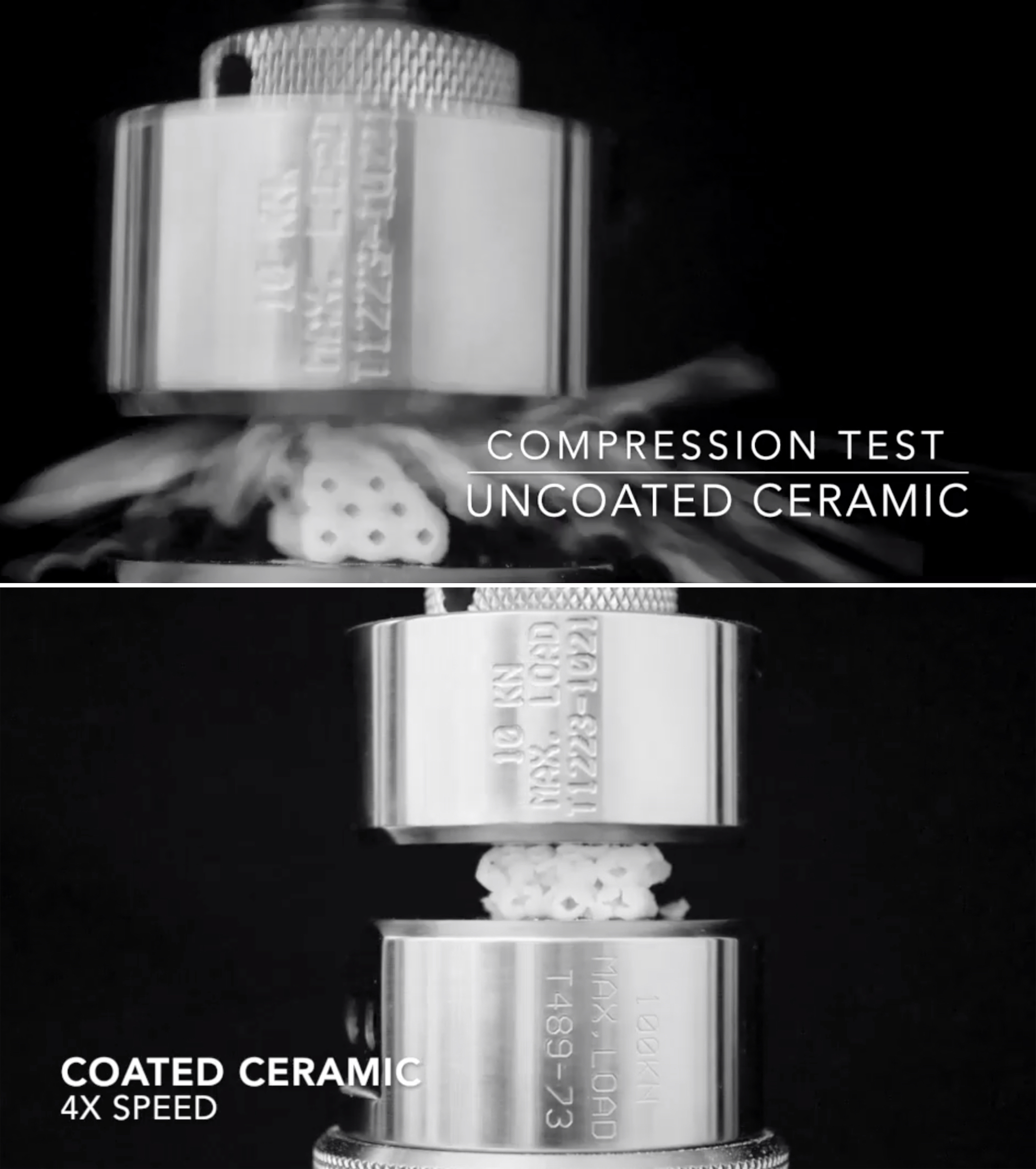
A thin shell of soft polymer can help prevent knotty ceramic structures from shattering, according to materials scientists at Rice University.
Ceramics made with 3D printers crack under stress, like any plate or bowl. But when covered in a soft polymer cured under ultraviolet light, the same materials stand a far better chance of keeping their structural integrity, much like a car windshield's treated glass is less likely to shatter.
The research at Rice's Brown School of Engineering, reported in a paper in Science Advances, demonstrates this concept on schwarzites, complex lattices that for decades existed only as theory but can now be made with 3D printers. With added polymers, they come to resemble structures found in nature that consist of hardened platelets in a biopolymer matrix, such as seashells and bones.
Schwarzites are named for German scientist Hermann Schwarz. In the 1880s, he hypothesized that these 'negatively curved' structures could be used wherever very strong but lightweight materials are needed, from batteries to bones to buildings.
The researchers, led by Rice materials scientists Pulickel Ajayan and Muhammad Rahman and graduate student and lead author Seyed Mohammad Sajadi, proved through experiments and simulations that a coating of polymer no more than 100µm thick will make fragile schwarzites up to 4.5 times more resistant to catastrophic fractures. The structures may still crack under pressure, but they won't fall apart.
"We've clearly seen that the uncoated structures are very brittle," said Rahman, a research scientist at Rice. "But when we put the coated structures under compression, they will take the load until they completely break. And interestingly, even then they don't completely break into pieces. They remain enclosed like laminated glass."
The team, with members in Hungary, Canada and India, created computer models of the structures and then printed them with a polymer-infused ceramic 'ink'. The ceramic was cured on the fly by ultraviolet lights in the printer, and then dipped in polymer and cured again.
Along with uncoated control schwarzites, the intricate blocks were then subjected to high pressure. The control schwarzites shattered as expected, but the polymer coating prevented cracks from propagating in the others, allowing the structures to keep their form.
The researchers also compared the schwarzites to coated solid ceramics and found the porous structures were inherently tougher. "The architecture definitely has a role," Sajadi said. "We saw that if we coat a solid structure, the effect of the polymer was not as effective as with the schwarzite."
According to Ajayan, the coatings acted a bit like the natural materials they mimic, with the polymer infusing into defects in the ceramics and enhancing their resistance.
Several structural applications could potentially benefit from such polymer-enhanced ceramics, while their biocompatibility could also make them suitable for prosthetics. "I'm pretty sure that if we can optimize these structures topologically, they also show good promise for use as bioscaffolds," Rahman said.
This story is adapted from material from Rice University, with editorial changes made by Materials Today. The views expressed in this article do not necessarily represent those of Elsevier. Link to original source.






